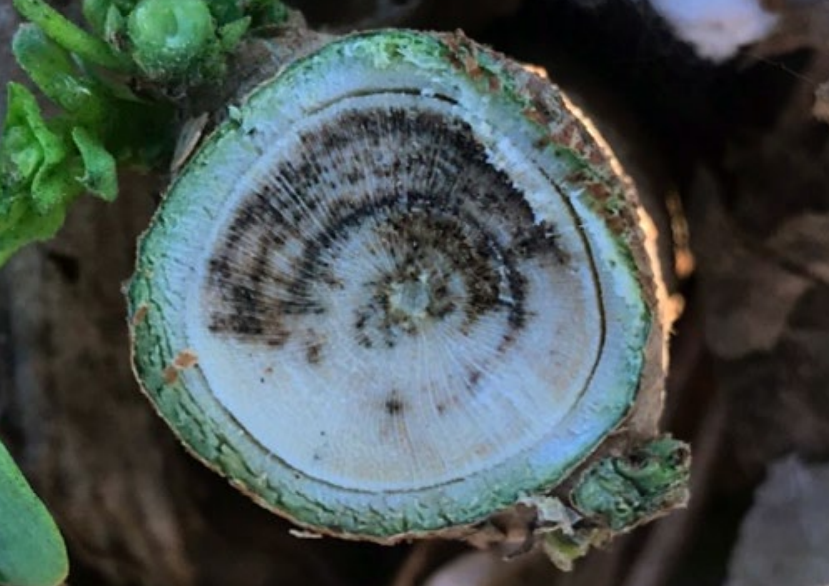All you need to know about Verticillium
ONSET OF VERTICILLIUM WILT
- Mild and wet growing conditions are ideal for Verticillium wilt.
- Crops grown longer, which push the growing time into cooler conditions, developing upper boll load.
- The application of more water and nitrogen to achieve higher yields.
- A large boll load puts extra stress on the plant.
THE INFLUENCE OF TEMPERATURE ON RESISTANCE
- Temperature highly influences the occurrence and severity of Verticillium wilt.
- High Verticillium rank varieties will see the tolerance to the disease at 25-27°C.
- This will diminish in cooler temperatures, becoming susceptible at average temperatures of 20-22°C.
- Temperature drops during peak flowering or boll fill are likely to have more of an impact on yield (but not necessarily disease incidence) rather than these conditions occurring later in the growing season.
SYMPTOMS OF THE DISEASE
- Leaf mottling, yellowing between the leaf veins and around the leaf margins.
- Vascular discolouration or browning, extending throughout the stem and into the petioles.
- Root system appears otherwise healthy.
- Plants may be stunted, and defoliation may occur. The best way to assess the infected plants is to cut the stem length ways from root to tip.
- Verticillium wilt appears as flecks along the stem (not continuous). Fusarium wilt will reveal a continuous brown discolouration.
Samples should be referred to a plant pathologist for confirmation of the disease. To determine which pathologist to submit a sample to, please contact your local CottonInfo REO. A diagnostic form can be downloaded here.


Examples of Verticillium Wilt
MISDIAGNOSIS WITH PREMATURE SENESCENCE
- Varieties such as Sicot 714B3F and Sicot 707B3F are often misidentified as have verticillium wilt due to being predisposed to premature senescence.
- Premature senescence is primarily a disorder of potassium deficiency caused by an imbalance in the sink and source relationship.
CONTROL STRATEGIES FOR VERTICILLIUM WILT
- Use tolerant varieties e.g. Sicot 714B3F and Sicot 606B3F.
- Provide a balanced crop nutritional program, especially nitrogen and potassium.
- Minimise periods of water logging through specific irrigation management.
- Manage the crop for earliness and avoid late season irrigations.
- Rotate with non-host crops such as sorghum and cereals.
- Control alternate weed hosts.
- Conduct a disease survey of your own after harvest to understand and monitor disease incidence.
© Cotton Seed Distributors Ltd 2022. General guide only; not comprehensive or specific technical advice. Circumstances vary from farm to farm. To the fullest extent permitted by law, CSD expressly disclaims all liability for any loss or damage arising from reliance upon any information, statement or opinion in this document or from any errors or omissions in this document. Roundup Ready Flex®, Roundup Ready®, Bollgard II® and Bollgard® 3 are registered trademarks of Monsanto Technologies LLC, used under licence by Monsanto Australia Ltd. Insect control technology incorporated into these seeds is commercialised under a licence from Syngenta Crop Protection AG. Sicot, Sicala, Siokra and Sipima cotton varieties are a result of a joint venture research program, Cotton Breeding Australia, conducted by CSIRO and Cotton Seed Distributors Ltd (CSD). CSD is a partner in the CottonInfo joint venture, in partnership with Cotton Research Development Corporation and Cotton Australia.